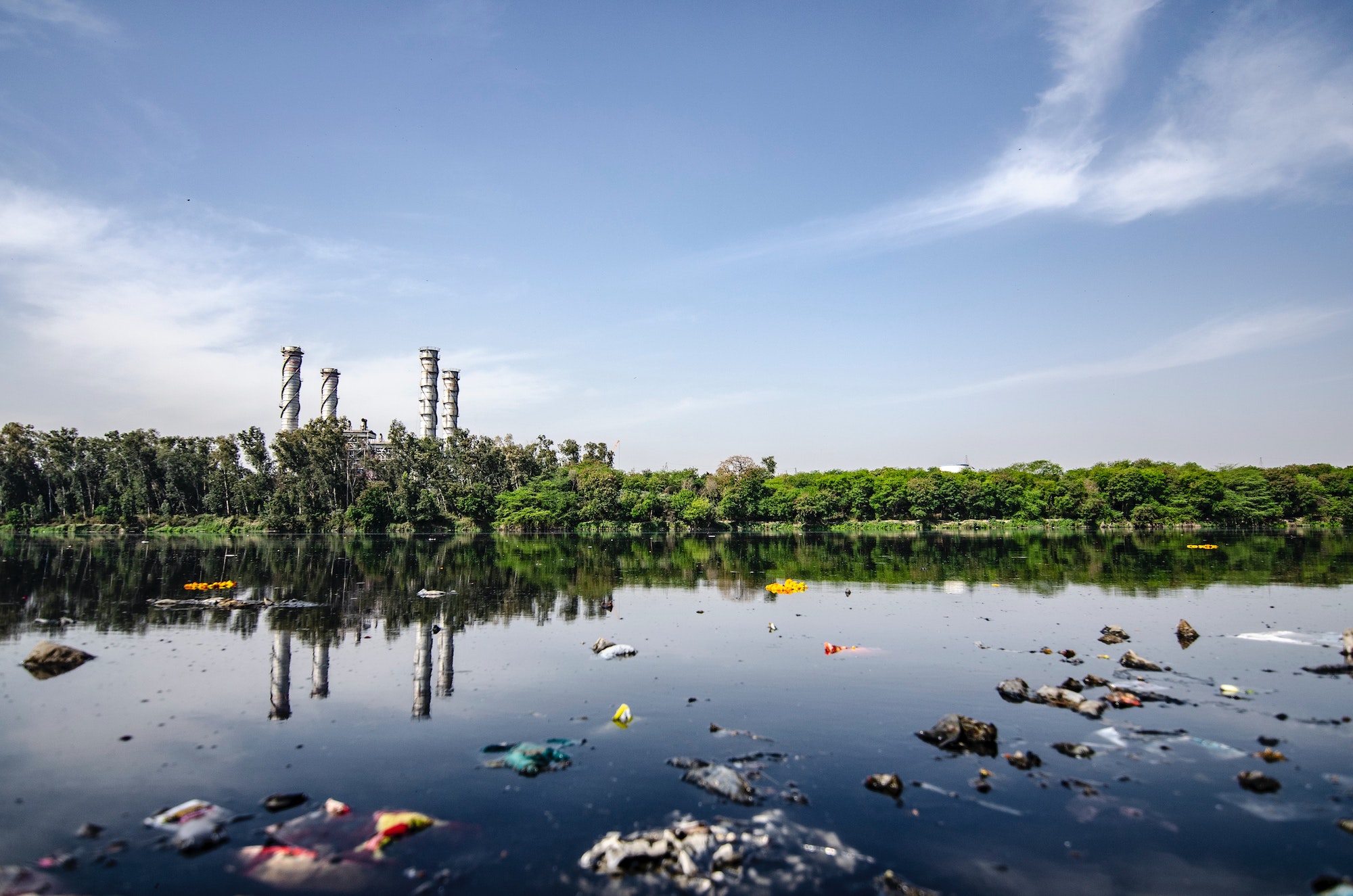Our interdependency on the natural world means that we receive back the pollution we create – often causing implications for human health.
Though we can be impacted by many different environmental pollutants, this overview will highlight some of the most common sources linked with human health globally.
In this article, we’ll cover:
- What Are Some Examples Of Pollution That Are A Concern For Public Health?
- Microplastics – An Emerging Public Health Concern?
- Pollution Inequality and Public Health
- How Can You Manage Your Pollution Health Risk?
What Are Some Examples Of Pollution That Are A Concern For Public Health?
Air Pollution
A staggering 90% of humans breathe polluted air. Fine particulate matter pollution is created primarily by human combustion of fossil fuels, and is visible as haze or smog when present in high concentrations. Exposure can increase the risk of cardiovascular disease, stroke and lung cancer, with an estimated annual healthcare cost of $820 Billion in the US.
Globally, one of the major exposures to particulate matter pollution is from indoor cooking. Over 40% of the world’s population (3 billion people) do not have access to clean-burning cooking fuels, which the World Health Organization (WHO) estimates is responsible for almost as many global deaths as ambient air pollution.
Heavy Metals
Sources of heavy metal exposure can be from natural geological processes that weather rocks and sediments, or anthropogenic sources (mining, burning fossil fuels for energy, agriculture, household products). Long-term (chronic) exposure to low doses of heavy metals are the most studied examples, and people in these cases have a variety of negative public health outcomes, such as neurological disorders, cancers, cardiovascular disease, immune disorders and abnormal development in children.
One common exposure to heavy metals is through contaminated drinking water. Some examples of how water can become contaminated are by the natural leaching of geological sediments into groundwater that drinking wells are then sourced from, or the leaching of heavy metals from the use of lead plumbing. A tragic example of heavy metal contamination in drinking water occurred in Flint, Michigan.
Noise
Anthropogenic noise is more than an annoyance, noise pollution exposure has been linked to public health outcomes like reduced memory and comprehension, cardiovascular disease, and psychological factors related to interrupted sleep. People exposed to noise pollution are very likely being exposed to air pollution created by the source of the noise (traffic, aircrafts, rail), so it is important to note that it’s not fully understood whether noise is having an independent or additive affect to air pollution in all cases.
To highlight the extent of the impact that noise may be having on public health, experts recently went so far as to estimate that, “one million healthy life years are lost every year from traffic-related noise in the western part of Europe”.
Microplastics – An Emerging Public Health Concern?
Microplastics (particles smaller than 5mm) are known to be present in air, soil, freshwater, oceans, and are within plants and animals (including humans). Although humans are taking in microplastics through inhalation, and in sources of food and water, the biological activity or fate of microplastics within the human body is not yet well understood and there is no scientific consensus on their public health risks.
Gaining an understanding of public health outcomes related to microplastics will be a focus in the coming decades. We may even look to our scientific understanding of particulate air pollution and engineered nanomaterials for similarities (for further interest, read more).
Pollution Inequality and Public Health
Public health outcomes from environmental pollution are not felt equally within or among countries.
Low and middle-income countries (primarily in Asia and Africa) are disproportionately impacted by air pollution, whereas the lowest ambient pollution exposure is in high income countries. Air pollution also transports intercontinentally, such that the country of polluting origin can reduce the air quality for people on distant shores.
High risk for lead heavy metal exposure in the US is correlated with sociodemographic factors, including a greater risk depending on race and income. People with lower incomes are also more likely to experience noise pollution because of the availability of affordable housing prices in noisy areas.
Pollution from human burning of fossil fuels (mostly from energy production and agriculture) is creating greenhouse gases that are driving climate change, and the resultant effects on quality of life are disproportionately going to be felt by the countries which contribute the least to the problem.
How Can You Manage Your Pollution Health Risk?
Exposure to pollution is inevitable, and the management of pollutants that pose public health risks is an extremely complex global issue.
Many countries have legislation to manage air quality (in the US, it’s the Clear Air Act), and there is increasing global interest in transitioning away from the combustion of fossil fuels which is the major contributor to our ambient air pollution.
On an individual level, you might consider your exposure to pollution that may pose health risks by:
- Getting informed about local air pollution exposure through resources like BreatheLife (supported by the World Health Organization and the United Nations) or outdoor air quality mapping resources like the EPA’s AirNow.
Educate yourself on common sources of household exposure to heavy metals like lead.
